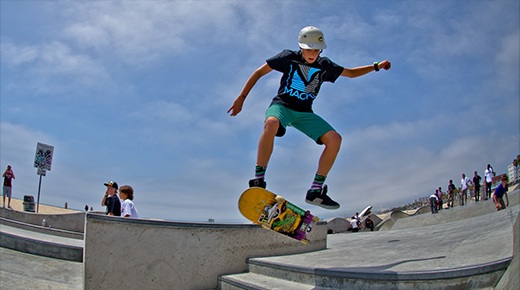Skateboarding has been a popular sport and cultural phenomenon for decades, with roots in California in the 1950s. Over time, the sport has evolved and diversified, giving rise to various styles of skateboarding, including street skateboarding.
Street skateboarding emerged in the 1970s, when young people in California began performing skateboard tricks on the streets as a form of self-expression and cultural rebellion. These performances often combined skateboarding with elements of street culture, such as music and graffiti, creating a unique and vibrant cultural phenomenon.
As street skateboarding culture grew in popularity, it began to attract a broader audience of young people who were drawn to its freedom, creativity, and individuality. Today, street skateboarding is a global sport and cultural phenomenon, with a large and devoted following of enthusiasts around the world.
Part of the appeal of street skateboarding is its emphasis on creativity and self-expression. Unlike other sports, which may have strict rules and regulations, street skateboarding is a sport that encourages individuality and improvisation. Skaters can create their own unique style and develop their own repertoire of tricks, making each performance a reflection of their personality and creativity.

Another factor that has contributed to the popularity of street skateboarding is its accessibility. Unlike other sports that require specialized equipment or facilities, skateboarding can be done almost anywhere. All that is required is a skateboard and a flat surface, such as a sidewalk or parking lot. This accessibility has made skateboarding a sport that is popular among young people from all walks of life, regardless of their background or socioeconomic status.
Despite its popularity, street skateboarding has faced some challenges over the years. Some communities have viewed skateboarding as a nuisance, and have attempted to restrict or ban skateboarding in public spaces. This has led to conflicts between skateboarders and local authorities, as well as between skateboarders and other members of the community.
However, in recent years, there has been a growing recognition of the value of street skateboarding as a positive cultural phenomenon. Cities around the world are now building skateparks and other facilities to support skateboarding, and there has been a greater acceptance of skateboarding as a legitimate sport and form of self-expression.
In conclusion, street skateboarding has become a global phenomenon that has captured the imaginations of young people around the world. Its emphasis on creativity, individuality, and accessibility has made it a sport and cultural phenomenon that is unique and enduring. As skateboarding continues to evolve and grow, it is sure to remain a vital and dynamic part of youth culture for years to come.






